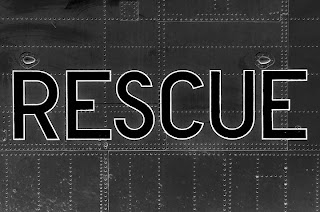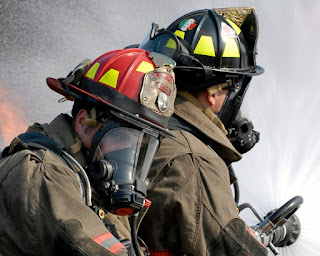 WILMINGTON, DE (December 27, 2008) – Long before the Route 141 Bypass, and years before Greenville evolved into a suburban shopping Mecca, firefighting along Route 52, Delaware's Chateau Country, was often handled by the Wilmington Fire Department. At least that’s the story that’s been handed down by old school Wilmington firefighters, several of whom recalled responding to what were commonly reffered to as “phantom box alarms."
WILMINGTON, DE (December 27, 2008) – Long before the Route 141 Bypass, and years before Greenville evolved into a suburban shopping Mecca, firefighting along Route 52, Delaware's Chateau Country, was often handled by the Wilmington Fire Department. At least that’s the story that’s been handed down by old school Wilmington firefighters, several of whom recalled responding to what were commonly reffered to as “phantom box alarms."Before World War II, fire response along the Kennett Pike, from Wilmington to the Delaware/PA state line, was virtually non-existent. There were no community fire stations, and it would be decades before New Castle County fire companies would determine how to slice up that piece of the county. When a fire occurred on the Kennett Pike, homeowners would dial “0” and reach the Diamond State Bell operator, who would direct the emergency call to individual fire company dispatchers, many of whom worked from their homes.
 Once the operator convinced a rural dispatcher that there truly was an emergency, an engine was sent from Elsmere, Talleyville, Hockessin or even Kennett Square – whichever station assembled their crew the fastest. Back then; the trip wasn’t easy, as the top heavy, slow moving pumpers would make their way through the winding back roads and hills to the fire scene. The trip often took 30 minutes or more.
Once the operator convinced a rural dispatcher that there truly was an emergency, an engine was sent from Elsmere, Talleyville, Hockessin or even Kennett Square – whichever station assembled their crew the fastest. Back then; the trip wasn’t easy, as the top heavy, slow moving pumpers would make their way through the winding back roads and hills to the fire scene. The trip often took 30 minutes or more.View the Fire Response map along Route 52
It’s tough to find records from days gone by, but suffice it to say that the Brandywine Valley had its share of blazes in the first part of the 20th century. From barns to multi-million dollar homes, if there was a working fire in Chateau Country, chances are fire companies would arrive to find little more than a smoldering foundation. With such tremendous losses, it may seem odd that communities like Greenville and Centerville, the folks who could easily afford to support a local firehouse, never considered building their own station.
The lack of rapid fire response became an issue with wealthy estate owners, whose assets included large homes, which contained collectibles, irreplaceable furnishings and artifacts. So, a wealthy few took the firefighting problem into their own hands, creating their own brigades, staffed by employees, chauffeurs and farm hands
 The first brigade was formed in 1924 when multi-millionaire Pierre S. DuPont purchased a GMC fire engine to protect his estate, Longwood Farms. (Now Longwood Gardens) Two years later, he founded the Longwood Fire Company, and expanded the brigade’s responsibilities to include protecting his neighbor’s homes.
The first brigade was formed in 1924 when multi-millionaire Pierre S. DuPont purchased a GMC fire engine to protect his estate, Longwood Farms. (Now Longwood Gardens) Two years later, he founded the Longwood Fire Company, and expanded the brigade’s responsibilities to include protecting his neighbor’s homes. Further toward Wilmington, another DuPont family member, Henry Francis, established a well-equipped fire brigade to protect his growing property, furniture and art collections at the Winterthur Estate. Nearly 80 years later, Henry's brigade still exists covering the Winterthur Estate and Museum with 24 hour coverage, two fire engines and 26 trained fire-rescue personnel.
 For the duPonts, leaving their properties unprotected would have been foolish, especially when a small investment in apparatus and equipment could provide them with a trained, rapid-response team. In retrospect, their good sense preserved what have become cherished national treasures.
For the duPonts, leaving their properties unprotected would have been foolish, especially when a small investment in apparatus and equipment could provide them with a trained, rapid-response team. In retrospect, their good sense preserved what have become cherished national treasures. But for other families and homeowners along the road between Kennett and Wilmington, the thought of watching their home burn as they waited for fire crews to arrive didn’t sit well.
The first to approach the city Fire Bureau was H. R. Sharp, Jr., whose "Gibraltar" estate sat just outside the city's corporate limits. His pitch to fire administrators was simple -- "I'll pay for you to respond to my home." It wasn't long before other families along Route 52 caught on and began to contract with the Wilmington Bureau of Fire for the so-called phantom protection.
For Wilmington firefighters, who worked a grueling military schedule of 24 hours on, 24 hours off, the response to rural New Castle County was always welcomed. Why? Homeowners were extremely kind to the responding firemen, offering them food, drink, but most importantly, gratuities. Of course uniformed personnel were forbidden to accept tips or gifts, but the thinking among the fire station personnel was, "What the Hell, these are phantom boxes”, fires that never took place…never happened at all.
 Most of the salts who I’ve spoken to recall that the “phantom box alarms” ended sometime in the mid-1960’s. By then, volunteer companies had established district boundaries, with mutual aid agreements, many of which have been fine-tuned to provide much better service for those who live along Route 52.
Most of the salts who I’ve spoken to recall that the “phantom box alarms” ended sometime in the mid-1960’s. By then, volunteer companies had established district boundaries, with mutual aid agreements, many of which have been fine-tuned to provide much better service for those who live along Route 52. Since the last phanton response, the Pride of the 40 Acres, Engine 5, has lost over half of its crew through cutbacks and attrition. These days there are just 4 firefighters and one pumper remaining in a station that once held three apparatus and housed 10 firefighters.
But even now, when FireCom dispatches volunteers along the Route 52 corridor, Station 5's watchman turns an ear, and the mighty Pierce Pumper draws a little extra current from it shore line, just in case the Phantom returns.
-----



























